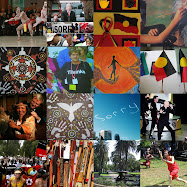
Smoking is already banned in workplaces, and many smokers congregate on footpaths outside buildings. Often to get into a building you have to walk past a small gaggle of cancer-stick puffers and their smoky fugue. It can cause problems for air intake vents, which may recirculate smoke through air conditioning systems.
From July 1, there will be a ban on indoor smoking in pubs and clubs. City of Sydney staff and City Rangers will be out and about today accompanied by City of Sydney Butt Busters talking to people about the pollution caused by cigarette butt littering.
Squads of butt busters will target litter hotspots handing out 10,000 free personal ashtrays and encouraging business to join the City of Sydney's Clean Harbour Partners program where they can apply for a free wall-mounted ashtray valued at $350.
City of Sydney Acting CEO said: "We're reminding people that cigarette butts littering Sydney streets get washed down the stormwater drain and end up in Sydney Harbour or on Bondi Beach.
"What seems like a small piece of litter is the most commonly discarded litter item in NSW and is a massive environmental issue."
A City of Sydney study in the CBD, Kings Cross and Glebe found there were more than 15,000 butts thrown away every day - which is about 5.4 million butts potentially going straight into Sydney Harbour.
The City of Sydney has also warned that its plain-clothed City Rangers will step up their operations in late July targeting litterers.
The City Rangers have the power to issue $60 on the spot fines for littering and $200 on the spot fines for littering a lit cigarette butt.
Can you see a time when smokling will be banned in all but your own home? Even then, some people in apartments complain about cigarette smoke entering their space from others' smoking on balconies. It seems evident to me that restrictions on smokign will continue to increase. Which, as a non-smoker, I don't mind at all!
 Look hard (above), and your faithful correspondent is part of the action!
Look hard (above), and your faithful correspondent is part of the action! A film crew spent the day recently filming at the coffee shop in my work building. Actor John Malkovich spent much of the day inside, but by the time I heard about it and poked my camera in the general direction, he didn't appear to be there.
A film crew spent the day recently filming at the coffee shop in my work building. Actor John Malkovich spent much of the day inside, but by the time I heard about it and poked my camera in the general direction, he didn't appear to be there. 
















































